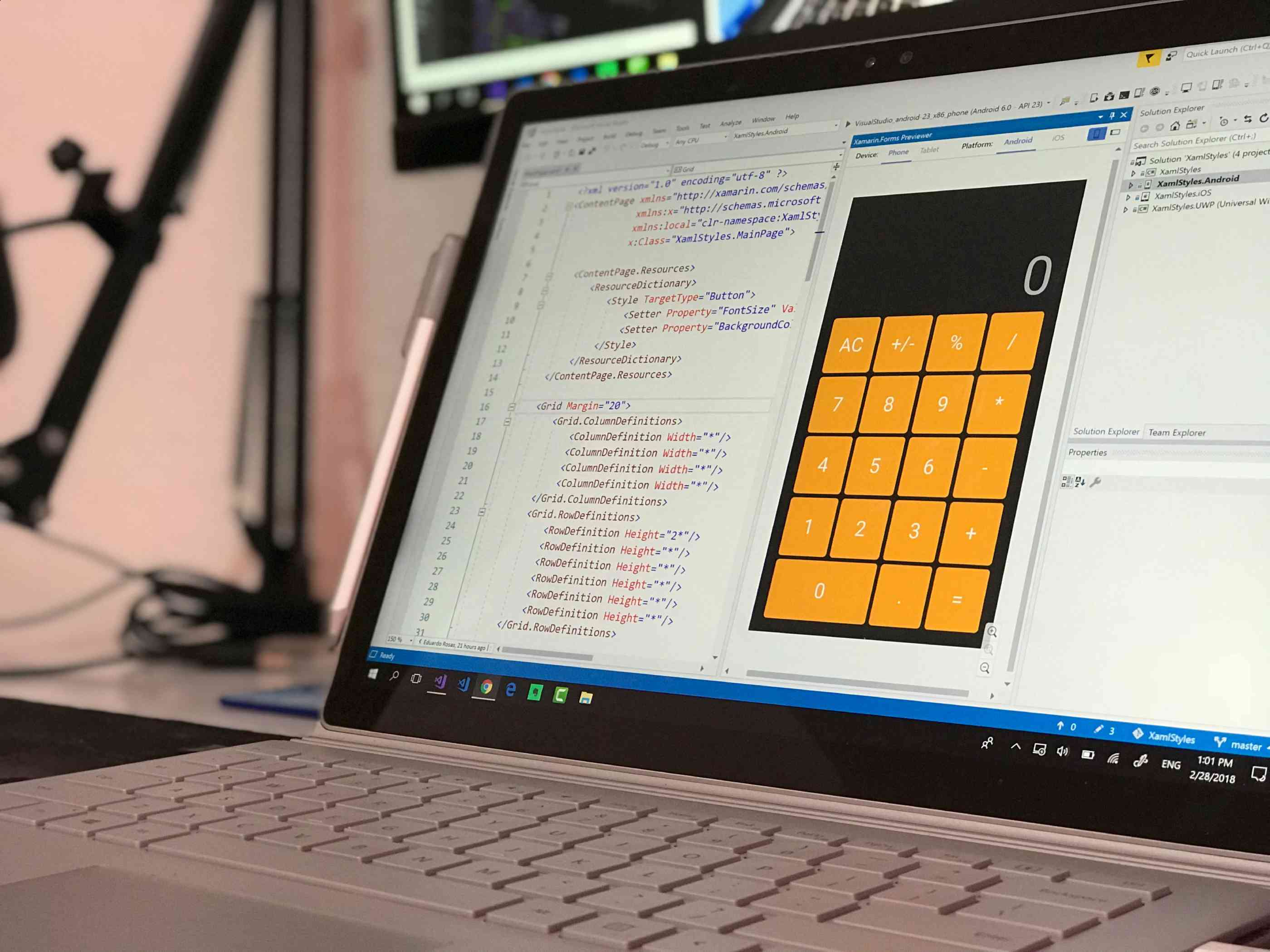Front-End vs Back-End Web Development: Understanding the Differences
Web development is broadly divided into two main areas: front-end and back-end development. Both play crucial roles in building modern web applications, but they focus on different aspects of the development process. If you're considering a career in web development or want to understand the distinctions, this article will break down their key differences, skills required, and how they work together.

What is Front-End Development?
Front-end development focuses on the visual and interactive elements of a website. It is what users see and interact with directly in their web browsers. The goal is to create an appealing, responsive, and user-friendly experience.
Key Responsibilities of a Front-End Developer:
- Designing and structuring web pages using HTML, CSS, and JavaScript.
- Ensuring responsive design across different devices (mobile, tablet, desktop).
- Optimizing website performance for faster loading times.
- Implementing animations, UI components, and interactivity.
- Working with design tools like Figma or Adobe XD to translate designs into code.
- Collaborating with back-end developers to integrate APIs.
Technologies Used in Front-End Development:
- HTML (HyperText Markup Language): The backbone of every webpage, defining its structure.
- CSS (Cascading Style Sheets): Styles and enhances the appearance of elements on a page.
- JavaScript: Adds interactivity and dynamic functionality.
- Frameworks & Libraries: React.js, Vue.js, Angular.js, Bootstrap, Tailwind CSS.
- Version Control Systems: Git, GitHub, GitLab.
- Testing Tools: Jest, Mocha, Selenium.
What is Back-End Development?
Back-end development is responsible for the server-side logic, database management, and application performance. It ensures that data is stored securely and delivered to the front-end when requested.
Key Responsibilities of a Back-End Developer:
- Writing server-side logic to handle requests and responses.
- Managing databases and ensuring data integrity.
- Implementing authentication and security protocols.
- Developing and maintaining APIs (RESTful & GraphQL).
- Optimizing website speed and scalability.
- Debugging and testing back-end functionality.
Technologies Used in Back-End Development:
- Programming Languages: Node.js, Python, PHP, Java, Ruby, C#
- Databases: MySQL, PostgreSQL, MongoDB, Firebase.
- Frameworks: Express.js, Django, Flask, Spring Boot, Laravel.
- API Development: REST, GraphQL.
- Authentication: JWT, OAuth, Passport.js.
- Cloud & Hosting: AWS, Firebase, DigitalOcean, Heroku.
- Version Control: Git, Bitbucket.
- Testing Tools: Jest, Mocha, Postman, Newman.






Key Differences Between Front-End and Back-End Development
| Feature | Front-End Development | Back-End Development |
|---|---|---|
| Focus | User interface (UI) and user experience (UX) | Server, database, and application logic |
| Languages | HTML, CSS, JavaScript | Python, PHP, Java, Node.js, Ruby |
| Frameworks/Libraries | React.js, Vue.js, Angular.js, Bootstrap | Django, Flask, Express.js, Laravel |
| Tools | Figma, Adobe XD, Chrome DevTools | Postman, MySQL Workbench, AWS |
| Main Responsibilities | Designing web pages, styling, animations, responsiveness | Handling server logic, database operations, authentication |
| Interaction With Users | Direct (Users interact with buttons, forms, UI elements) | Indirect (Users request data through front-end interactions) |
| Performance Optimization | Optimizing images, lazy loading, CSS minification | Query optimization, caching, load balancing |
How Front-End and Back-End Work Together
Even though front-end and back-end developers work on different aspects of a website, they must collaborate to ensure seamless functionality.
- User Request: A visitor clicks a button on the front-end.
- API Call: The front-end sends a request to the back-end server.
- Database Query: The back-end retrieves or updates information in the database.
- Response Handling: The server sends the requested data back to the front-end.
- Display Results: The front-end processes the data and updates the UI accordingly.
For example, when you log into a website:
- The front-end presents a login form.
- The back-end verifies the username and password in the database.
- If correct, it returns a success response and redirects the user to their dashboard.
Full-Stack Development: The Best of Both Worlds?
A Full-Stack Developer is proficient in both front-end and back-end development. They can build complete web applications independently, from UI design to database management.
Why Become a Full-Stack Developer?
- Greater flexibility and problem-solving abilities.
- Increased job opportunities and higher salary potential.
- Ability to work on all aspects of web applications.
- Better communication with teams since they understand both areas.
Popular Full-Stack Technologies:
- MERN Stack: MongoDB, Express.js, React.js, Node.js
- MEAN Stack: MongoDB, Express.js, React.js, Node.js
- LAMP Stack: Linux, Apache, MySQL, PHP
- Django + React: Python Django for back-end, React.js for front-end
Which Career Path is Right for You?
Choose Front-End Development if:- You enjoy working with Design and UI/UX.
- You like creating visually appealing and interactive elements.
- You want to specialize in frameworks like React or Vue.js.
- You love logic, problem-solving, and working with databases.
- You want to handle APIs, authentication, and security.
- You prefer languages like Python, Java, or PHP.
- You want a well-rounded skill set in both front-end and back-end.
- You enjoy working independently and tackling complete projects.
- You are aiming for leadership roles in tech.
Conclusion
Front-end and back-end web development are both essential for creating functional and efficient web applications. While front-end developers focus on user experience and design, back-end developers handle server-side logic and databases. If you're starting in web development, choosing between the two depends on your interests and career goals. For those who want to master both, full-stack development is a great option!
No matter which path you choose, learning modern frameworks, staying updated with industry trends, and practicing coding projects will help you succeed in the ever-evolving world of web development.
Related

Web Development - Mar 11, 2025
Common Web Development Mistakes and How to Avoid Them
Web development is a complex process that requires careful planning, design, and execution. However, many developers and businesses make common mistakes that can negatively impact a website’s performance, usability, and SEO.

Web Development - Mar 10, 2025
Web Development Myths: Debunking Common Misconceptions
Web development is a crucial field in today’s digital world, yet it remains surrounded by myths and misconceptions. Many businesses and individuals hold outdated or incorrect beliefs about web development, leading to poor decisions, unrealistic expectations, and even failed projects.

Custom Web - Mar 02, 2025
The Ultimate Web Development Step-by-Step Guide: Build Your Dream Website from Scratch
So, you’re thinking about diving into web development? Whether you’re an aspiring developer or a business owner looking to create a killer website, understanding the step-by-step process is crucial.

Custom Software - Feb 26, 2025
A Bespoke Software Development Company: Cathedral provides tailored solutions for your unique business needs
Off-the-shelf solutions often do not cut the mustard. Every business, regardless of its size or stature, has unique work processes, challenges, customer expectations, and deeply ingrained workflows which are near impossible to change.

Custom Web Development - Feb 24, 2025
Web Design And Web Development Difference. Create Your Digital Experience
Consider yourself walking into a high-end store. The outlook is perfect, the layout is inviting, and every product is persented with elegance. You feel comfortable, drawn in, and compelled to explore.

Custom Software - Feb 24, 2025
The Best 10 Benefits of Custom Software Development
Let’s consider a world where your business runs beautifully, every tool is at your digital doorstep, every function works hand in hand, and no clumsy features distract you. A fantasy?

Custom Software - Feb 24, 2025
The Enchanting Journey of the Custom Software Development Process
Imagine taking walks into a world where every single click, every interaction, and every digital sight is built specifically for you—crafted with precision, intelligence, and an almost miraculous awareness of your needs.

Custom Web Application - Feb 24, 2025
What is a Web-Based Application? A Comprehensive Guide by AppsXone IT Solutions
Web-based applications have more importance than before in the current scenario. People use these tools for day-to-day activities such as social media usage or online banking.

Custom Web Application - Feb 24, 2025
What Do We Do in Customized Web Application Development
AppsXone IT Solutions creates tailored digital solutions through web application development, which helps businesses optimize operations and deliver superior customer satisfaction while improving productivity.

Custom Web Application - Feb 24, 2025
What Does Custom Web Application Development Involve
Without a doubt, technology is an essential resource for achieving success in any business. One of the major ways of achieving efficiency and scalability is custom web apps—software that is designed for a single business and not generic solutions.

